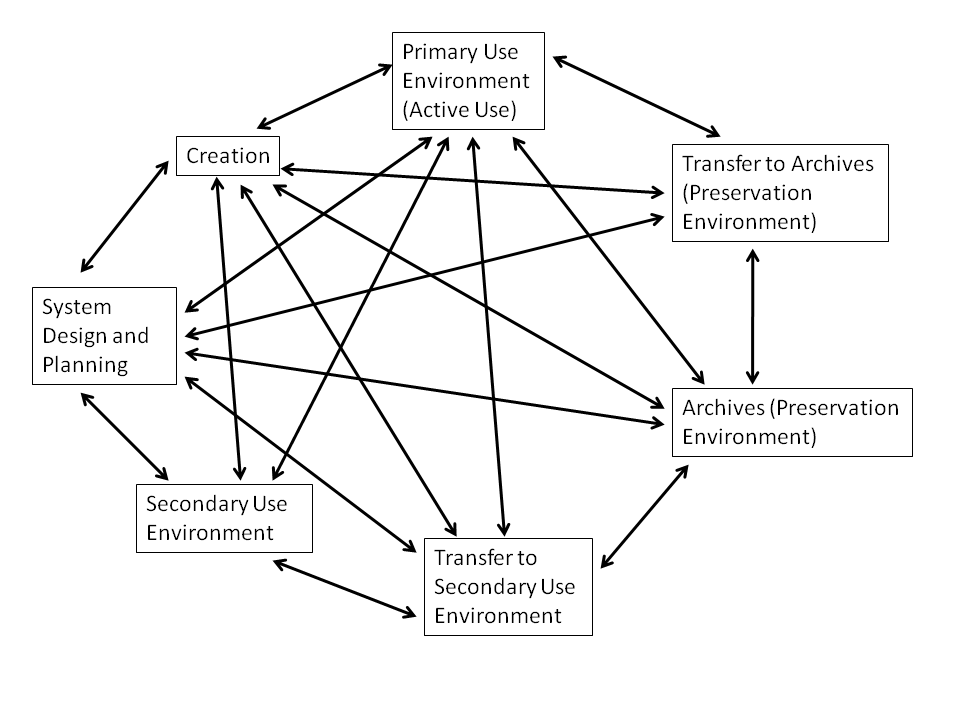Title: Transition Point in the Information Continuum (Dimension 6 of Matrix of Digital Curation Knowledge and Competencies)
Author: Christopher (Cal) Lee, School of Information and Library Science, University of North Carolina at Chapel Hill
Draft: June 17, 2009 (Version 18)
Project: DigCCurr (IMLS Grant # RE-05-06-0044)
 Creative Commons Attribution Non-Commercial Share-Alike 3.0 License
Creative Commons Attribution Non-Commercial Share-Alike 3.0 License
[http://creativecommons.org/licenses/by-nc-sa/3.0/]
The figure below represents the major transition points of digital objects. This is the sixth dimension of the DigCCurr Matrix. The arrows illustrate many -- but not all -- of the potential paths of information flowing through the transition points. Information flow can take the form of information packages that contain digital objects, the digital objects themselves, parts of digital objects, surrogates, and information about digital objects. Ideally, policies will determine whether movement of information constitutes a formal transfer of custody (and associated responsibility) or instead constitutes simply a "copy" of information, with primary curatorial responsibilty remaining unchanged.
There are two transition points specifically devoted to transfer (to archives and to secondary use environment), because these are both transition points that often require specific "staging areas" for the purposes of storage and (often extensive) treatment of the digital objects. When the path into the archives or secondary use environment is relatively immediate and unmediated, then the "transfer" transition point is effectively not addressed as a distinct transition point (e.g. creator self-submission into an archive or secondary use environment for immediate access by others).
It is very important to note:
- Not all digital objects will pass through all transition points (e.g. not all digital objects that are subject digital curation requirements will be transfered to a separate archives).
- Transition points can occur more than once (e.g. the same set of digital objects could be moved into many different secondary use environments).
- There is no single, linear order to the transition points (recursion, iteration and parallel execution are common and often acceptable).
- Responsibility for specific tranistion points will often be shared, and responsibility can shift over time.

 Creative Commons Attribution Non-Commercial Share-Alike 3.0 License
Creative Commons Attribution Non-Commercial Share-Alike 3.0 License
